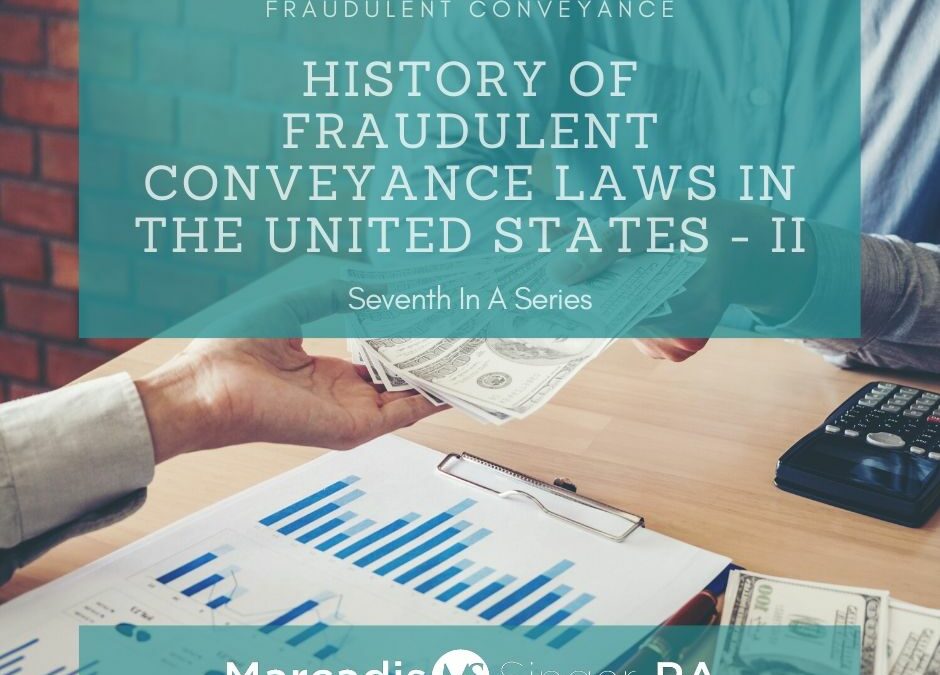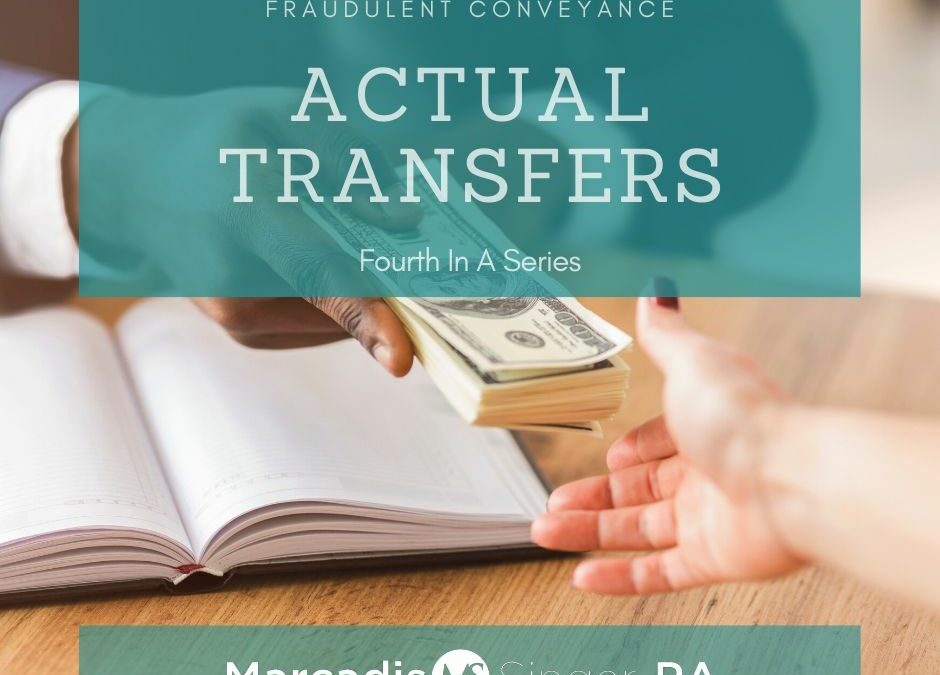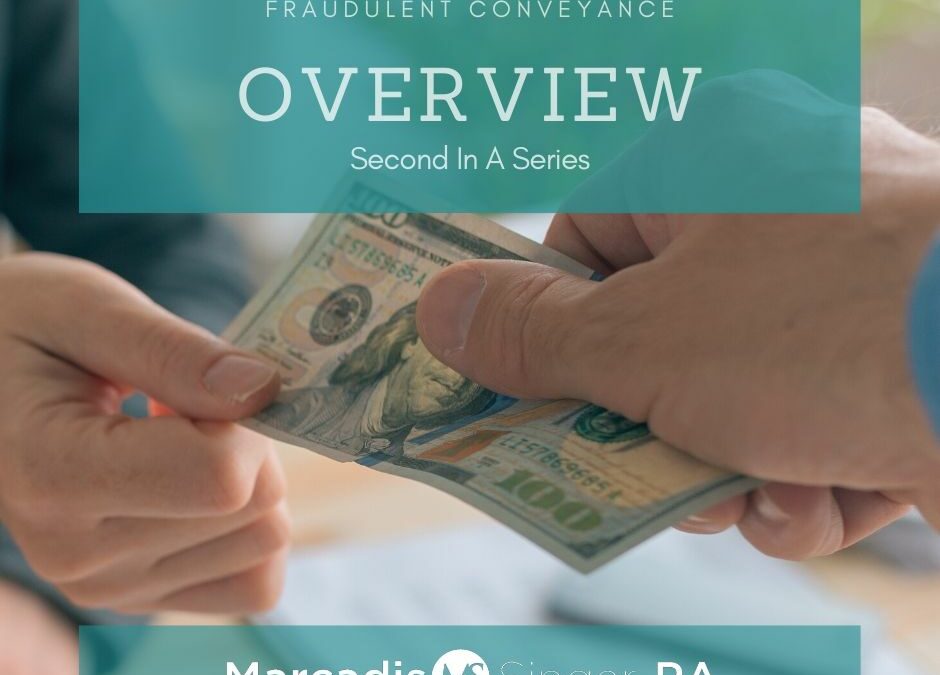
by Admin | Jul 22, 2020 | Fraudulent Transfers
History of Fraudulent Conveyance Laws in the United States Part 2 Unfortunately, unless the parents can pay the trustee the greater of the equity in the home or the sum of their debts (either directly to the Chapter 7 trustee or in payments to a Chapter 13 trustee),...

by Admin | Jul 15, 2020 | Fraudulent Transfers
History of Fraudulent Conveyance Laws in the United States Part 1 In the United States, two sets of laws govern fraudulent conveyances or transfers. The first set of laws being the Uniform Fraudulent Transfer Act (“UFTA”) that has been embraced by all but...

by Admin | Jul 8, 2020 | Fraudulent Transfers
Badges of Fraud Proof of actual intent is rarely available to financial institutions because it would need proof of somebody’s inner thoughts and intentions. Due to the fact that financial institutions often have to depend on circumstantial proof of fraud, to...

by Admin | Jul 1, 2020 | Fraudulent Transfers
Actual Transfers Most people are familiar with the simple example of a deliberate fraudulent Conveyance. This type of transfer of property is made by a debtor with the intent to defraud, hinder, or delay his or her creditors. In other words, actual transfers generally...

by Admin | Jun 24, 2020 | Fraudulent Transfers
Constructive Transfers A constructive conveyance does not require fraudulent intent, but rather it solely involves the underlying financial aspects of the deal. Specifically, if the debtor accepted less than the fair market value for an asset at a time when the debtor...

by Admin | Jun 17, 2020 | Fraudulent Transfers
Overview A Conveyance is considered fraudulent if it is made with the actual intent to prevent, obstruct, or defraud any lender. Therefore, if a transfer is made with the specific intent to avoid satisfying a legitimate debt, then actual intent, in fact, exists....






